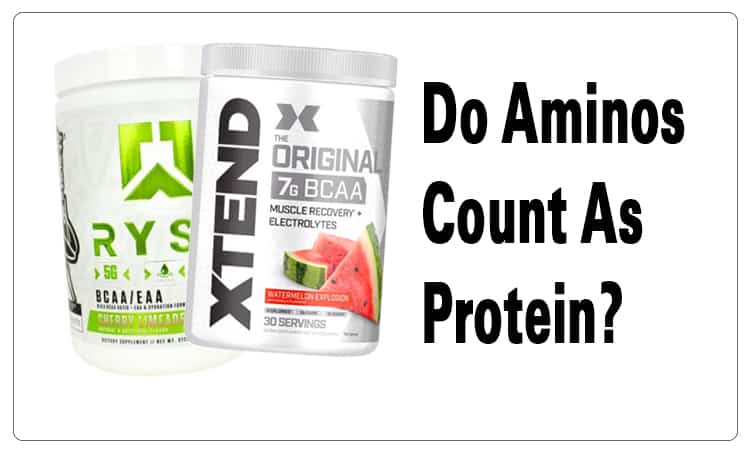
Intermediate and advanced lifters may use essential amino acid (EAA) or branched chain amino acid (BCAA) supplements as part of an intra workout protocol for improved muscle growth, recovery, and performance.
When protein is consumed in the diet, it is broken down into individual amino acids, and later rebuilt into proteins again to help build muscle and support other internal bodily functions.
People who are serious about their diet tend to track their macronutrient and calorie intake in an app like MyFitnessPal or Cronometer. At the very least, people who frequent the gym and have the goal of building muscle will make sure they are getting sufficient protein on a daily basis.
While experts can nitpick about exactly how much protein is needed to build muscle, most people follow the tried and true standard of 1 gram per pound of lean body mass. But there is often confusion as to how to track amino acid intake from EAA or BCAA supplements.
Even though EAA and BCAA supplements are technically not complete proteins in their whole form, they still count toward total protein intake. However, it should be noted that amino acid supplements do not spike muscle protein synthesis levels to the same degree as complete protein sources.
Amino acid supplements are basically broken down, sometimes called pre digested, protein. But it is not a complete protein in the way whey protein or food sources are. However, when you take a quality essential amino acid supplement, it will contain all 9 essential amino acids commonly found in foods like eggs or chicken.
EAAs and BCAAs are broken down into free form amino acids rather than bonded together like a peptide or complete protein. It may seem like a slight technicality, but there is a reason why amino acids and protein powders are considered two separate categories of supplements.
Essential amino acids are deemed such because they must be obtained via diet and/or supplementation. Essential amino acids cannot by synthesized by the body, hence the word essential (similar to essential fatty acids).
The 9 essential amino acids are necessary in sufficient amounts to optimally build muscle. If certain aminos are lacking, then the body will have to take them from existing tissue or from the limited amino acid pool found in the body.
It is at this point where it would be relevant to point out that BCAAs do not provide any real benefit on their own. BCAAs only fulfill 3 of the 9 essential aminos necessary to build muscle. While leucine, a critical amino acid for protein synthesis, is included in BCAA formulas, it is almost useless without the full spectrum of EAAs.
Can You Take EAAs Instead of Protein
A quality essential amino acid supplement will have a similar amino acid profile to a bioavailable protein powder like whey. Since the ratios are similar, some people may wonder if they can skip on the protein and just take EAAs post workout.
As mentioned, EAAs do not provide the same rise in muscle protein synthesis as whey, but it still provides a significant increase nonetheless. The issue is with dosing.
For most individuals, 25-40 grams of protein post workout is an optimal amount to stimulate muscle growth and recovery. Essential amino acid supplements usually come in servings of 10 grams or less. While it would be okay to use EAAs post workout, it would be extremely cost ineffective.
You may have to use 3-4 scoops of EAAs to get the equivalent amino acid total of one scoop whey protein. This could come out to roughly $4-5 per serving compared to protein powder which is about $1-1.50.
Can You Take EAA and Whey Protein Together
The best way to maximize muscle growth and recovery is to take an EAA powder intra workout and whey protein post workout.
Aside from the sheer amount of amino acids from the two supplements combined, there is a theory behind it to optimizing muscle growth.
During the workout, blood is flowing to the muscles being contracted. Blood carries nutrients and oxygen. The theory is that having amino acids in the bloodstream, in the form of an EAA supplement, will maximize muscle growth from that workout.
Some may ask; why not just take whey protein intra workout since it is more cost effective? Whey protein still has to be broken down into its free form amino acid state before it can work to rebuild muscle. Although whey is a fast digesting protein, nothing can beat a supplement already in its amino acid form.
For some people, whey protein in the middle of a workout can lead to stomach cramping and other digestive issues. This is another reason why it’s best to leave it as a post workout supplement.
A solid intra and post workout protocol would be 10 grams of a quality amino acid supplement during the workout followed by 30 grams of whey protein post workout.
